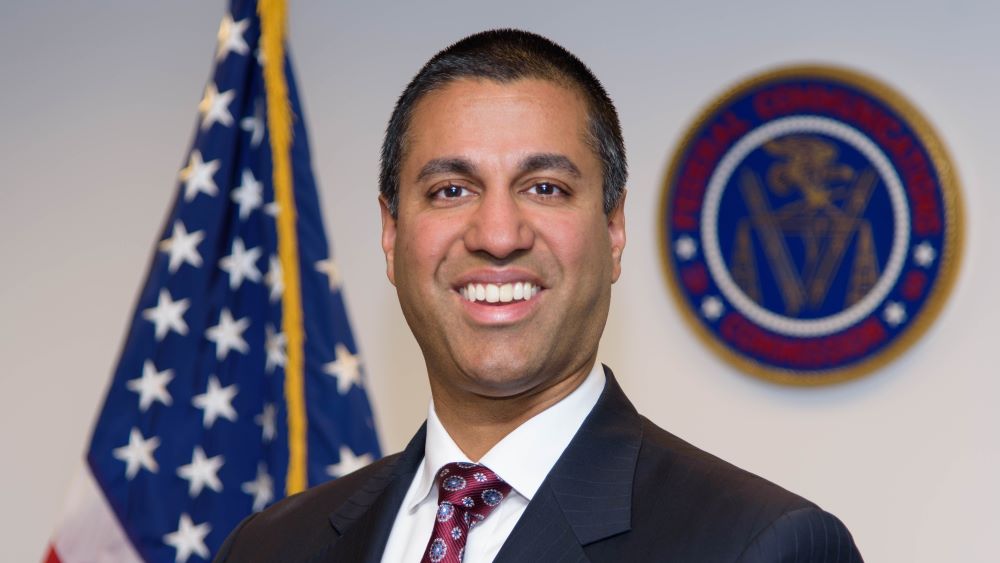Pai Urges Media Ownership Reforms
In address to Media Institute, outgoing FCC chairman also says “NextGen TV has started to gain real momentum”

WASHINGTON—In what is likely to be one of his last major speeches as FCC chairman, Ajit Pai used a good portion of his time speaking virtually with the Media Institute on Tuesday, Dec. 15, about the continued fight over new media ownership rules.
The FCC under Pai’s time as chairman has been in a fight with the U.S. Third Circuit Court over changes to media ownership rules proposed in 2017. After multiple appeals to the court and ultimately denials, the FCC is taking its case to the Supreme Court.
One of the key arguments the Third Circuit has made in denying the FCC’s proposal is that it does not take into account the impact the rules will have on diversity ownership. Pai disagrees. He told the Media Institute that his administration has been an advocate for promoting diversity in media, and that the FCC proposal includes a broadcaster incubator program designed to encourage new and diverse voices into the industry.
Other elements of the proposal include eliminating the newspaper-broadcast cross-ownership ban established in 1975 and easing the local television ownership rule, which prevented a single company from owning two stations in a market unless there were at least eight independently-owned commercial TV stations in the market.
“These decisions were obvious. They were needed. They were completely consistent with Congress’ command that we repeal or modify any such rules that are no longer in the public interest as a result of competition,” said Pai. “Yet once again, they were blocked by the same divided panel on the U.S. Court of Appeals for the Third Circuit that has commandeered media ownership policy for 17 years. Collectively, this panel’s decisions have frozen in place decades-old ownership restrictions that are absurdities in the digital age.”
The FCC’s case is scheduled to go before the Supreme Court on Jan. 19, the final day before Pai leaves the commission.
Pai also recognized the momentum building for the ATSC 3.0 standard, otherwise known as NextGen TV. Describing it as one of the FCC’s leading efforts for broadcast innovation during his time, Pai said that currently there are 21 markets in the U.S. broadcasting ATSC 3.0, with 20 TV models currently available to receive the next-generation signal, and more on the way in 2021.
Get the TV Tech Newsletter
The professional video industry's #1 source for news, trends and product and tech information. Sign up below.
Pai wants the FCC to continue to push ATSC 3.0, as well as other broadcast innovation, as it will offer “improved, free, over-the-air television broadcast services,” and Broadcast Internet features like distance learning, telehealth, advanced emergency alerting, hyperlocal news and software and cybersecurity updates to smart cars and Internet of Things devices, he says.
Other areas that Pai touched on in his speech included additional media modernization efforts he says was one of his key priorities during his time as chairman; and how the emergence of streaming and other new digital technologies is turning Must-See TV into Must-Watch Internet.
Pai also gave his thoughts on what he believes will be key issues for the FCC and the federal government in the future. This includes a re-assessment of what the media marketplace looks like now and where it’s going. This could include reforms, including a re-writing of the Cable Act, as Pai suggests. He then returned to his point on media ownership, saying that the concept of media ownership regulation needs to be reevaluated.
Pai’s full remarks to the Media Institute are available through the FCC website.
